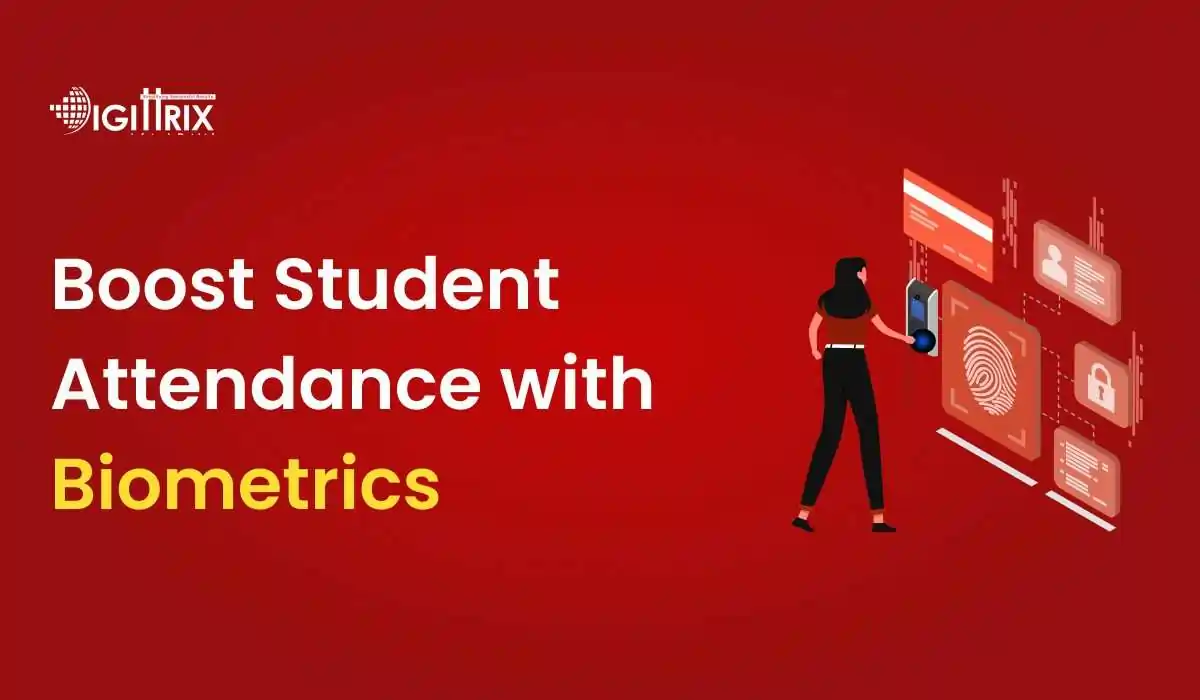Biometric attendance systems improve accuracy, reduce absenteeism, and enhance security in educational institutions. Schools adopting biometric technology report significant improvements in attendance tracking and data management.
Highlights
With Over 14 years of Experience in the IT Field, Helping Companies Optimise there Products for more Conversions

Managing student attendance stands as a critical requirement within educational facilities. Departmental staff face challenges when using traditional roll calls and manual registers because these practices require time and generate errors. Biometric systems represent a trustworthy tracking solution for student attendance because of recent technological advancements. A combination of fingerprint, along with facial recognition and iris scans, operates as an attendance tracking system to deliver accurate results by eliminating mistakes and enhancing precision.
A biometric system identifies students through individualized physical features, which include fingerprints and facial patterns. The system stores recorded data, which performs identity verification during every student check-in. The fingerprint attendance system represents the most popular biometric solution because students need to put their finger onto the scanning device. The system applies immediate automatic recording of attendance after students are authenticated. Students undergoing entry processes at these schools experience facial recognition that automatically identifies them to mark their presence with zero contact required.
A central data storage system within biometric systems enables administrators and teaching staff to access all data. School administration can track student enrollment through these records and produce reports alongside detecting patterns regarding student non-attendance. The combination of an electronic attendance system helps institutions maintain a robotic way to track attendance activities.
Old-school attendance methods often cause mistakes or fake check-ins. A biometric system makes sure the real student can mark their presence by cutting down on false entries. An electronic attendance system guarantees exact data gathering. Because biometric features are one-of-a-kind for each person, it's much harder to cheat the system.
Taking attendance by hand eats up class time. A biometric system gets rid of roll calls, letting teachers spend more time teaching. This doesn't just save time; it also boosts how well classroom activities run. In more major schools where keeping track of attendance is tough, biometric tech makes the job simpler and quicker.
Using biometric technology for attendance checks, signed-up students come in. This adds extra protection, lowering the chance of strangers getting onto school grounds. It gives parents and school bosses peace of mind about student safety. Schools that mix biometric attendance with door control systems can stop break-ins and keep people from wandering where they shouldn't inside the building.
A biometric system keeps attendance records in digital form, which makes report generation simpler. Schools and colleges can see data in real time helping them spot attendance patterns and act if needed. They can tailor reports by date how well students do, and how often they show up. This helps to find students who don't come and fix the problem when necessary.
Keeping records by hand means big attendance books. A biometric system turns this into a digital task cutting down on paperwork and making it easier for staff to manage records. Schools don't have to rely on paper logs anymore, which can get lost or damaged as time goes by. Tracking attendance is also good for the environment, as it uses less paper.
Biometric attendance systems help keep students responsible for showing up to class. Teachers and parents can check attendance records through automated systems making sure students go to their classes . When combined with student management software, the system can send messages to parents if a student misses class several times without a good reason.
This method involves scanning a student’s fingerprint, which is then matched with the stored data. Since fingerprints are unique to every individual, this system is accurate and easy to use. Institutions prefer thumbprint attendance due to its affordability and efficiency in maintaining attendance records.
This system captures a student’s facial features and matches them with pre-stored data. It is useful in cases where fingerprint scanning might not be feasible. Facial recognition is widely used in universities and schools where non-contact methods are preferred for hygiene reasons.
Some institutions use biometric technology combined with RFID cards. Students scan their cards, and the system records their entry. This method is often integrated with software for attendance tracking. Although RFID is not strictly biometric, it is sometimes combined with biometric data for multi-factor authentication, improving security and accuracy.
This advanced method scans the unique patterns of a student’s iris to authenticate identity. It is one of the most accurate biometric technologies but is more expensive compared to other methods. It is used in high-security environments where accuracy is the top priority.
While biometric systems offer several benefits, institutions might face some challenges during implementation:
To implement a biometric system, institutions often work with a software development company. These companies provide customized attendance tracking solutions that integrate with existing school management software. A custom software development service ensures that the biometric system meets the specific needs of an institution. The software can be tailored to generate detailed attendance reports, notify parents about student absences, and analyze attendance trends over time.
The adoption of biometric technology in schools is expected to increase. As security concerns grow, institutions will continue seeking solutions that ensure accurate attendance tracking. The integration of biometric systems with cloud-based platforms can provide remote access to attendance data, making monitoring easier for teachers and parents. Artificial intelligence is also being integrated into biometric systems to improve accuracy and detect anomalies in attendance trends.
Biometric attendance systems offer an efficient way to track student attendance while reducing administrative work. Whether using a thumbprint attendance system or a facial recognition system, educational institutions can benefit from improved accuracy and security. By working with a software development company, schools can implement an attendance system that fits their needs, making attendance tracking more efficient and dependable. With continued advancements in biometric technology, educational institutions will have access to even more precise and secure methods of attendance tracking in the future.
Managing student attendance manually can lead to errors and inefficiencies. A biometric attendance system provides a secure way to track attendance using fingerprint or thumbprint authentication, ensuring accuracy and preventing unauthorized entries.
At Digittrix, we develop custom software solutions for educational institutions looking to implement a biometric attendance system. Our electronic attendance system integrates smoothly with existing university infrastructures, simplifying attendance tracking while improving security and accuracy.
Looking for a secure and efficient way to track student attendance? Contact us at +91 8727000867 or email digittrix@gmail.com to implement a biometric technology solution for improved attendance management.

Do you need help in Web Development ?




Join over 1500+ businesses we've already helped!
A biometric attendance system captures unique physical traits like fingerprints or facial patterns to identify students and record their attendance automatically.
It ensures accurate attendance tracking, prevents proxy attendance, saves time, reduces paperwork, and enhances security within the institution.
Common methods include fingerprint scanning, facial recognition, iris scans, and RFID-based systems integrated with biometric data.
Yes, reputable systems use encryption and strict security measures to protect student data from unauthorized access.

©2025Digittrix Infotech Private Limited , All rights reserved.